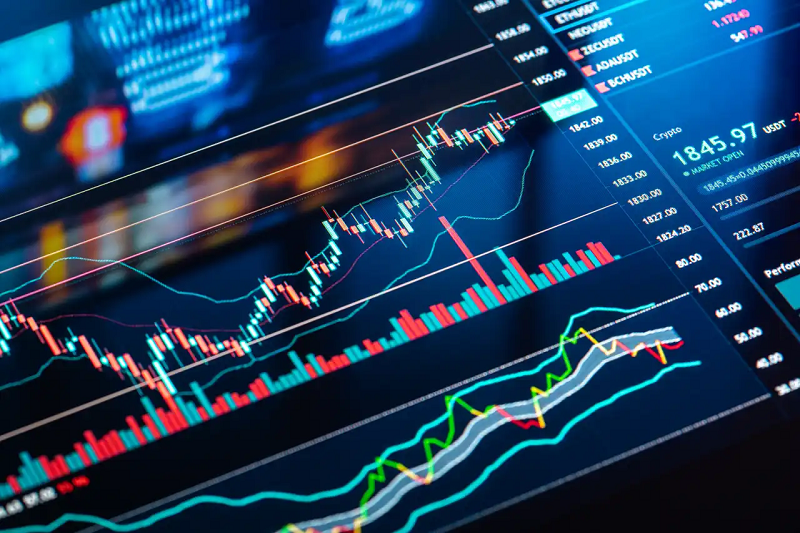COLUMN-Conflict, drones, rare earths drive China supply chain dependence fears: Peter Apps

By Peter Apps
LONDON, Nov 28 (Reuters) - When British Army Captain Hugo Crawford was told by his commanders to build drone capability for his battalion and given some limited regimental funds, no one questioned their first purchases: cheap, mass-produced multi-rotor drones from China.
Fast forward to late 2025, and Crawford is now in the private sector as head of growth for Europe for U.S. drone manufacturer Neros, delivering drones to Ukraine, the U.S. military and at least three other NATO nations including the UK.
But while an embattled Kyiv government says it has had no choice but to rely on defence technology heavily built from Chinese components, the Pentagon and other Western allies are now racing to dial down that reliance, keenly worried that in the event of a major conflict it might prove catastrophic.
"They take apart every drone and then zoom in on the chips and see where everything comes from," said Crawford. He described the process by which the U.S. Defense Innovation Unit draws up its “blue list” of authorised unmanned aerial drones and checks that they are free of significant components from China, Russia, North Korea and other potentially hostile states.
However, it is China that is by far the largest player.
As late as 2024, the Atlantic Council, a U.S. think-tank, estimated China dominated 80 percent of the global drone market either through manufacturing completed drones or their components. Efforts to reduce that dependence have included partnerships between Britain and Ukraine as well as Poland and Taiwan – but with so far only limited results.
CHALLENGE TO REARM AT SPEED
Chinese market domination is significantly complicating efforts by the U.S. and major allies to rearm at speed.
That push is driven in Washington primarily by the growing fear of a major conflict with Beijing that might be sparked by a Chinese invasion of Taiwan, and in Europe by Russia’s 2022 full-scale invasion of Ukraine, and the apparently growing, broader Kremlin threat to eastern member states in NATO.
Nor is that dependence limited to drones.
Earlier this year, a Chinese boycott of “rare earth” export minerals following the imposition of U.S. trade tariffs by the Trump administration left whole swathes of the Western aviation and defence industry struggling for supplies.
Largely as a direct result, the second half of 2025 has seen a concerted effort in both the U.S. and Europe to diversify supply chains and find new sources of components and materials.
But such efforts may take years – and in the meantime, companies and governments are being forced to effectively “play for time” while facing tough choices on what risks they are prepared to take.
Last week, European Union industry czar Stephane Sejourne warned that Europe now had no choice but to “up its game” when it came to reducing dependence on China for key minerals.
He added that despite an undertaking from Beijing a month ago to suspend key rare-earth export limits, Europe was still only able to secure “dribs and drabs" of Chinese supplies.
Describing China’s approach as mobster-style “racketeering” that “deliberately targeted” Europe, Sejourne said European members now have no alternative but to do more recycling and take other steps to reduce long-term dependence.
For now, most estimates suggest China controls 80-90 percent of rare earth exports and refining globally, and it may well take years for other capacity to come online.
As this year has shown, the West also remains heavily dependent on China and a handful of other nations for substances and precursor chemicals for many explosives, pharmaceuticals and other industrial components.
As well as defence products, this gives Beijing a relative stranglehold over battery and renewable technology.
BEIJING’S SUPPLY CHAIN DOMINANCE
The race is now on to at least partially redress that imbalance.
Crawford’s employer Neros is looking to increase its annual production of drones from just a few thousand at the beginning of the year to more than 100,000 by the end of 2026.
Neros says its small “first-person-viewer” attack drones were the first to win a place on the U.S. “blue list”.
The company was founded in 2023 with funding from several U.S. venture capitalists including PayPal founder Peter Thiel, who also co-founded U.S. defence AI giant Palantir before financing several other defence tech firms including growing autonomous weapons maker Anduril.
CHINESE COST ADVANTAGE
Most of those firms as well as more established “defence prime” weapons makers are now doing what they can to reduce direct China dependence. But for now the systems they produce are often both more expensive and available in much lower numbers than equivalent more China-dependent products.
Earlier this month, Britain's defence ministry faced a barrage of media questions over whether it was wise to use Chinese-made 3D printers as part of a major exercise in Kenya.
These devices could dramatically speed up manufacturing of new drones and parts - but might also be vulnerable to hacking.
Shortly after the media briefing, senior British officials were reportedly warned to avoid sensitive conversations about Chinese-made electric vehicles.
Just because something contains no complex, chip-like components that might be hacked remotely, it does not mean the manufacturing process might not still be reliant on Beijing.
As Ukrainian tech entrepreneur Eveline Buchatskiy told a conference in London earlier this month, defence firms there have often struggled to find non-Chinese sources for basic components such as lenses for surveillance and attack systems.
Many current and former Western officials see that as part of a deliberate strategy in which the Chinese state has deliberately subsidised key strategic industries including rare and electrical components, effectively stopping serious competitors emerging elsewhere in the world.
When it comes to drones and other weapons in Ukraine, China appears to remain largely happy to keep supply lines open to both sides. Ukrainian technology specialists say that while China is not building completed weapons systems for either Russia or Ukraine, it is effectively using the war to develop building components and materials that go into such weapons.
In the event of a major war with the U.S. or another enemy, those resources could support China’s already massive arms industry – but perhaps more important still, if China suddenly blocked such supplies to the West, it would fast make any conflict harder for Beijing's foes.
The events of the first year of the Trump administration, however, have added yet another complexity for U.S. allies keen to build up weapons stocks.
Since Trump briefly cut off intelligence on weapons supplies to Ukraine earlier in the year, multiple countries have been working to reduce dependence on U.S. arms and networks, fearful of being similarly abandoned.
AFFECTING CONFLICT TIMELINES
While few see a full-blown war as inevitable, a major conflict – perhaps one lasting years – is now seen to be more plausible than at any point in recent history.
Since the early 2020s, U.S. officials have repeatedly warned that Chinese President Xi Jinping has ordered the Chinese military to be ready to invade Taiwan by 2027, although Chinese officials talk down such speculation.
The good news for Taiwan and the West, at least for now, is that worries about 2027 itself now seem to be easing.
While Beijing continues to build up military pressure on Taiwan, those who watch the island closely say that in the short term China’s strategic planners appear preoccupied by 2028 elections on the island as well as in the U.S. itself.
That, in part, is down to the election of Cheng Li-wun in October as new head of Taiwan’s opposition Kuomintang party, selected by the party with a mandate to push a much more pro-China stance.
A 2028 Taiwan election victory for the KMT over the current ruling Democratic Progressive Party – which is much more opposed to mainland communist control – might open the door to the “peaceful unification” China has always said it wanted.
WORRIES ABOUT U.S. ISOLATIONISM
At the very least, that dynamic gives Beijing a few more years to arm for future confrontation – as well as the prospect that the 2028 election in the United States might deliver a more isolationist president such as JD Vance, allowing a freer hand for China on Taiwan and the wider Pacific region.
Those jitters have already seen Japan – which fears a future Chinese blockade from nearby Taiwan if Beijing takes the island - step up warnings that it might move against Beijing from the very start of a Taiwan war, perhaps even if the U.S. did not.
Fears of a wider war in Europe, in contrast, have jumped significantly in recent weeks. There have been plentiful warnings that a U.S.-brokered peace deal on Ukraine – particularly one that plays mainly into Russian hands – might be followed within as little as a year by a Russian attack on at least one of NATO's Baltic member states.
European nations are already extremely concerned when it comes to their ability to fight Russia on their own, either to defend the Baltic states or Poland or to respond to a renewed attack against Ukraine.
Their struggle for critical supplies, however, would be hugely more challenging if it took place against the backdrop of a wider war with China.
Already, U.S. concerns about being outgunned by Beijing have become a key factor in the drying-up of arms supplies for Kyiv.
Meanwhile, European countries' worries about having to defend themselves without U.S. help are also reducing the amount of support Ukraine can get from Europe. The greater the fear of China cutting off supplies, the worse that challenge gets.
An attack on Taiwan – which by some measures accounts for up to 90 percent of the world’s most effective microchips – would deliver yet another blow against the Western supply chain.
The race to reduce that dependency is already underway – but if conflict is truly looming in the coming decade, the West looks unlikely to be fully prepared by the time it arrives.







